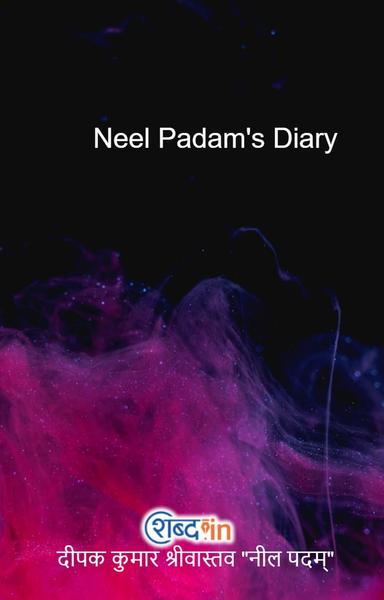The Ganesh Chaturthi
The festival celebrates Ganesha as the God of New Beginnings and the Remover of Obstacles as well as the god of wisdom and intelligence and is observed throughout India, especially in the states such as Maharashtra, Madhya Pradesh, Karnataka, Kerala, Telangana, Andhra Pradesh, Tamil Nadu and Goa. Ganesh Chaturthi is also observed in Nepal and by the Hindu diaspora elsewhere such as in Australia, New Zealand, Canada, Singapore, Malaysia, Trinidad and Tobago, Guyana, Suriname, other parts of the Caribbean, Fiji, Mauritius, South Africa, the United States, and Europe. In the Gregorian calendar, Ganesh Chaturthi falls between 22 August and 20 September every year. Although it was unknown when or where Ganesh Chaturthi was first observed, the public celebration was initiated by Bal Gangadhar Tilak in Pune in the year 1893. At public venues, along with the reading of texts and group feasting, athletic and martial arts competitions are also held. Though not alluding to the classical form of Ganapati, the earliest mention of Ganapati is found in the Rigveda. It appears twice in the Rigveda, once in shloka 2.23.1, as well as in shloka 10.112.9. Both of these shlokas imply a role of Ganapati as "the seer among the seers, abounding beyond measure in food presiding among the elders and being the lord of an invocation", while the shloka in mandala 10 states that without Ganapati "nothing nearby or afar is performed without you", according to Michael. However, it is uncertain that the Vedic term Ganapati which literally means "guardian of the multitudes", referred specifically to later era Ganesh, nor do the Vedic texts mention Ganesh Chaturthi. It appears in post-Vedic texts such as the Grhya Sutras and thereafter ancient Sanskrit texts such as the Vajasaneyi Samhita, the Yajnavalkya Smriti and the Mahabharata mention Ganapati as Ganesvaras and Vinayak. Ganesh appears in the medieval Puranas in the form of "god of success, obstacle remover". The Skanda Purana, Narada Purana and the Brahma Vaivarta Purana, in particular, profusely praise him. Beyond textual interpretations, archaeological and epigraphical evidence suggest Ganesha had become popular, was revered before the 8th century CE and numerous images of him are traceable to the 7th century or earlier. For example, carvings at Hindu, Buddhist, and Jain temples such as at the Ellora Caves, dated between the 5th and 8th-century show Ganesha reverentially seated with major Hindu goddess (Shakti). Although it is unknown when (or how) Ganesh Chaturthi was first observed, the festival has been publicly celebrated in Pune since the era of King Shivaji (1630–1680, founder of the Maratha Empire). The Peshwa in the 18th century were devotees of Ganesha and started as a public Ganesh festival in their capital city of Pune during the month of Bhadrapad. After the start of the British Raj, the Ganesh festival lost state patronage and became a private family celebration in Maharashtra until its revival by Indian freedom fighter and social reformer Lokmanya Tilak. Indian freedom fighter Lokmanya Tilak, championed it as a means to circumvent the colonial British government ban on Hindu gatherings through its anti-public assembly legislation in 1892. According to others such as Kaur, the festival became a public event later, in 1892 when Bhausaheb Laxman Javale (also known as Bhau Rangari), installed the first sarvajanik (public) Ganesha idol in Pune. In 1893, the Indian freedom fighter Lokmanya Tilak praised the celebration of Sarvajanik Ganesh Utsav in his newspaper, Kesari, and dedicated his efforts to launch the annual domestic festival into a large, well-organised public event. Tilak recognised Ganesh's appeal as "the god for everybody", and according to Robert Brown, he chose Ganesha as the god that bridged "the gap between Brahmins and non-Brahmins", thereby building a grassroots unity across them to oppose British colonial rule. Other scholars state that the British Empire, after 1870 out of fear of seditious assemblies, had passed a series of ordinances that banned public assembly for social and political purposes of more than 20 people in British India, but exempted religious assembly for Friday mosque prayers under pressure from the Indian Muslim community. Tilak believed that this effectively blocked the public assembly of Hindus whose religion did not mandate daily prayers or weekly gatherings, and he leveraged this religious exemption to make Ganesh Chaturthi to circumvent the British colonial law on large public assembly. He was the first to install large public images of Ganesha in pavilions in Bombay Presidency, and other celebratory events at the festival. According to Richard Cashman, Tilak recruited and passionately committed himself to god Ganesha after the 1893 Hindu-Muslim communal violence in Bombay and the Deccan riots, when he felt that the British India government under Lord Harris had repeatedly taken sides and not treated Hindus fairly because Hindus were not well organised. In Tilak's estimate, Ganesha worship and processions were already popular in rural and urban Hindu populations, across social castes and classes in Baroda, Gwalior, Pune and most of the Maratha region in the 18th century. In 1893, Tilak helped expand Ganesh Chaturthi festival into a mass community event and a hidden means for political activism, intellectual discourse, poetry recitals, plays, concerts, and folk dances. In Goa, Ganesh Chaturthi predates the Kadamba era. The Goa Inquisition had banned Hindu festivals, and Hindus who did not convert to Christianity were severely restricted. However, Hindu Goans continued to practice their religion despite the restrictions. Many families worship Ganesha in the form of patri (leaves used for worshiping Ganesha or other gods), a picture is drawn on paper or small silver idols. In some households Ganesha idols are hidden, a feature unique to Ganesh Chaturthi in Goa due to a ban on clay Ganesha idols and festivals by the Jesuits as part of the Inquisition. In India, Ganesh Chaturthi is primarily celebrated at home and in public by local community groups in the central and western states of Maharashtra, Madhya Pradesh, Gujarat, Rajasthan and Goa and the southern states of Karnataka, Andhra Pradesh, Telangana, Tamil Nadu and eastern states of West Bengal and Odisha and in North eastern states of Assam. On the same day, Chaurchan festival is celebrated in Mithila region of Bihar which is related to Ganesha and the moon-god Chandra. The date for the festival is usually decided by the presence of Chaturthi Thithi. The festival is held during "Bhadrapada Madyahanaa Purvabaddha". If the Chaturthi Thiti begins at night on the previous day and gets over by morning on next day, then the next day is observed as Vinayaka Chaturthi. In the consecration ceremony, a priest performs a Prana Pratishtha to invite Ganesh like a guest. This is followed by the 16-step Shodashopachara ritual, (Sanskrit: Shodash, 16; Upachara, process) during which coconut, jaggery, modaks, durva grass and red hibiscus (Jaswand) flowers are offered to the idol. Depending on the region and time zone, the ceremony commences with hymns from the Rigveda, the Ganapati Atharvashirsa, the Upanishads and the Ganesh stotra (prayer) from the Narada Purana are chanted. In Maharashtra as well as Goa, aarti is performed with friends and family, typically in the morning and evening. In preparation for the festival, artisans create clay models of Ganesha for sale. The images (murtis) range in size from 20 mm (3⁄4 in) for homes to over 20 m (70 ft) for large community celebrations. On the last day of the festival, the tradition of Ganesh visarjan or nimajjanam (lit. "immersion") takes places, when the Ganesha images are immersed in a river, sea or water body. On the last day, the devotees come out in processions carrying the idols of Ganesha, culminating in immersion. It is believed that the god who comes to the earthly realm on Ganesh Chaturthi, returns to his celestial abode after immersion. The celebration of Ganesh Chaturthi also denotes the significance of the cycle of birth, life and death. It is believed that when the idol of the Ganesha is taken out for immersion, it also takes away with it the various obstacles of the house and these obstacles are destroyed along with the immersion. Every year, people wait with great anticipation to celebrate the festival of Ganesh Chaturthi. In Pakistan, Ganesh Chaturthi celebrations are conducted by the Shri Maharashtra Panchayat, an organisation for Maharashtrians in Karachi. Ganesh Chaturthi is celebrated in the UK by the British Hindu population living there. The Hindu Culture and Heritage Society, a Southall-based organisation, celebrated Ganesh Chaturthi for the first time in London in 2005 at the Vishwa Hindu Temple; and the idol was immersed in the River Thames at Putney Pier[citation needed]. Another celebration, organised by a Gujarati group, has been celebrated in Southend-on-Sea, and attracted an estimated 18,000 devotees. Annual celebrations are also held on the River Mersey in Liverpool. The Philadelphia Ganesh Festival is one of the most popular celebrations of Ganesh Chaturthi in North America, and it is also celebrated in Canada (particularly in the Toronto area), Detroit Metropolitan area-Wayne State university, Mauritius, Malaysia and Singapore. The Mauritius festival dates back to 1896, and the Mauritian government has made it a public holiday. In Malaysia and Singapore, the festival is more commonly known as Vinayagar Chaturthi because of the large Tamil-speaking Hindu minority. In Ghana, ethnic African Hindus celebrate Ganesh Chaturti.
credit - इंटरनेट



